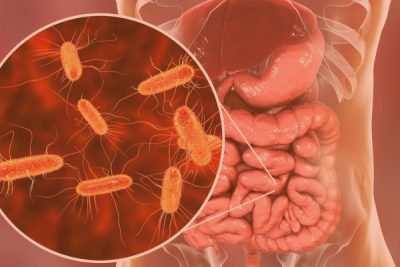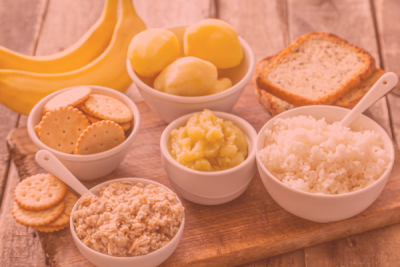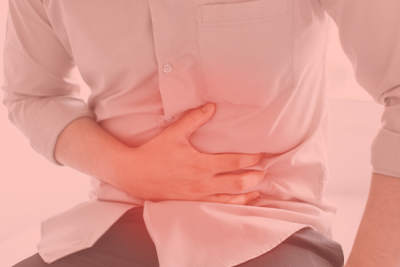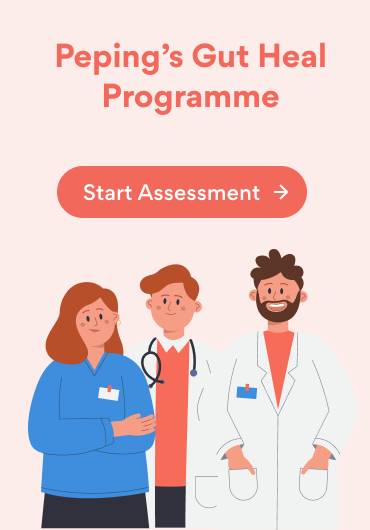Fatty Liver and Gut Health: The Unseen Connection
In today’s world, the importance of maintaining our overall health, particularly concerning our liver and gut, may often be overlooked.
Fatty liver disease, a condition involving excessive fat buildup in hepatic tissues (the liver), is becoming increasingly prevalent across the globe. Of interest, recent research indicates that there is a hidden connection between gut health and fatty liver.
An Introduction to Fatty Liver Disease
Fatty liver disease, or hepatic steatosis, is a condition characterized by excessive fat accumulation in the liver cells.
There are two types of fatty liver, i.e., alcoholic fatty liver disease (AFLD) and non-alcoholic fatty liver disease (NAFLD).
AFLD is associated with excessive alcohol intake, whereas NAFLD is linked to obesity, insulin resistance, and metabolic syndrome. Other factors that can influence fatty liver development include high triglyceride levels, a high-fat diet, sedentary lifestyles, metabolic disorders such as diabetes mellitus, rapid weight loss, and certain medications.
AFLD can give rise to symptoms such as abdominal discomfort (bloating, pain, and indigestion), fatigue, reduced appetite, weight loss, jaundice, nausea, and dark urine. NAFLD can result in enlarged liver and/or spleen and increased cholesterol levels. Individuals with fatty liver also have an increased risk of developing irritable bowel disease (IBD).
Fatty liver diagnosis includes physical examination, body mass index (BMI) determination, blood tests to monitor liver enzymes, imaging studies [ultrasound, computed tomography (CT), magnetic resonance imaging (MRI)], and liver biopsy.
The Gut-Liver Crosstalk and Fatty Liver Disease
The gut is intimately linked to the liver through the gut-liver axis. This axis represents the bidirectional communication between the gut and liver, and it plays a vital role in maintaining overall health.
The gut microbiome can affect metabolism, liver health, and liver inflammation by producing various metabolites. Bile helps in fat digestion and absorption; therefore, the liver effects can influence gut health by controlling bile production and release. In addition, the liver removes toxins and waste products from the blood and prevents them from entering the gastrointestinal tract.
The gut-liver axis involves various components, including the gut microbiome, the intestinal barrier, and the immune system.
- Gut Microbiome: The gut comprises trillions of microorganisms, including bacteria, viruses, and fungi, collectively known as the gut microbiome. Studies have reported that the microbial composition and the diversity of the gut microbiome can affect liver health. An imbalance in the gut microbiome, such as an overgrowth of harmful bacteria (such as Proteobacteria, Escherichia, and Enterobacteriaceae) and a decrease in beneficial ones (such as Eubacterium and Coprococcus), known as microbial dysbiosis, can contribute to fatty liver disease development and progression. Gut microorganisms play a role in nitrogen metabolism in fatty liver disease, contributing to hepatic ammonia accumulation and potential liver damage.
- Intestinal Barrier: The gut has a selectively permeable barrier that allows nutrients to be absorbed while preventing harmful substances from entering the blood. When this barrier is compromised, it can leak bacterial endotoxins into the blood, a condition known as leaky gut syndrome. This can trigger inflammation and negatively affect liver function.
- Immune system: The gut plays a crucial role in regulating the immune system. Microbial dysbiosis can activate immune responses leading to liver inflammation and damage. The immunological activation can worsen fatty liver disease.
Studies have reported that gut microbes can contribute to NAFLD pathogenesis by inducing genetic modifications [modulate deoxyribonucleic acid (DNA) methylation and histone acetylation).
Research has indicated that the gut microbiome is linked to liver disease and carcinogenesis (hepatocellular carcinoma). Gut microbes can influence hepatic fibrosis and the proliferation of liver cells (or hepatocytes).
Ways to Improve Gut Health for a Healthy Liver
Here are some practical steps you can take to promote a healthy gut and liver:
- Balanced Diet: Consume a diet rich in fiber, whole grains, vegetables, fruits, legumes, seeds, and nuts. These foods increase microbial diversity to reverse dysbiosis. Increasing the intake of short-chain fatty acids (SCFAs) can improve the expression of tight junction proteins in the intestine and improve barrier function. Consuming foods rich in polyphenols such a blueberries can promote gut health.
Diets rich in fructose sugars, animal-based products (such as eggs and meat), saturated fats, trans fats, processed foods, and packaged items contribute to dysbiosis. One must also choose smaller portion sizes and avoid large meals.
- Prebiotics and Probiotics: Add probiotic-rich foods such as yogurt or kefir and prebiotic foods such as bananas, onion, and garlic to your diet to support good bacteria abundance.
- Limit Alcohol intake: Excessive alcohol consumption can lead to liver damage.
- Maintain a Healthy Weight: Obesity is a significant risk factor for fatty liver disease and maintaining a healthy weight can help lower the risk. Studies have indicated that reducing weight by a minimum of seven to ten percent could improve disease activity. Weight-lowering medications, such as polyunsaturated fatty acids, metformin, thiazolidinedione, and ursodeoxycholic acid, lipid-lowering agents, and the antioxidants vitamins C and E, have been assessed as treatment strategies for NAFLD.
- Engage in regular exercise: Physical activity can enhance insulin sensitivity and boost overall metabolism, which could benefit the gut and liver. The Canadian Physical Activity Guidelines advocate that individuals aged 18 to 64 years must engage in 150 minutes or more of moderate-to-high-intensity aerobic activities each week to attain health benefits.
- Reduce stress: Chronic psychological stress can disrupt the gut microbiome and promote inflammation. Consider stress management techniques such as yoga, deep breathing, or medication in your daily routine.
- Limit antibiotic use: While antibiotics are essential for treating infections, their overuse can disrupt the gut microbiome. Use antibiotics only as indicated by healthcare professionals.
- Drink plenty of water. Drinking water with lemon and green tea could help in liver purification, with its antioxidant properties.
- Control risk factors. Medical disorders such as diabetes, hypertension or high blood pressure, and high cholesterol can increase the risk of NAFLD or worsen its severity. Therefore, optimal control of risk factors is vital to managing fatty liver disease.
- Morinda citrifolia extract (Nonitri) has hepatoprotective effects and improves gut health, preventing AFLD. Studies have reported that Nonitri lowers inflammation and fat deposition in the liver.
- Research has suggested Chinese herbal medicine as a therapeutic approach to improve NAFLD.
- Inulin therapy could alter the gut microbial composition and improve biochemical markers of steatosis among NAFLD patients. In particular, inulin treatment increases the abundance of Firmicutes and Actinobacteria in the gut.
Final thoughts
The connection between gut health and fatty liver disease is a fascinating and increasingly recognized area of research. A diverse and balanced gut microbiota is essential for maintaining liver health. Maintaining a healthy gut barrier is crucial for preventing liver inflammation and damage.
Chronic inflammation is a key driver of fatty liver disease, so addressing gut health can help reduce inflammation and improve liver function. Therefore, taking care of your gut can benefit your liver and overall well-being.
By understanding and nurturing the gut-liver axis, we can take proactive steps to prevent and manage fatty liver disease. Prioritizing a healthy diet, regular exercise and stress management can go a long way in supporting both our gut and liver, ultimately leading to better overall health and well-being.
A healthy gut is crucial for a healthy liver.













